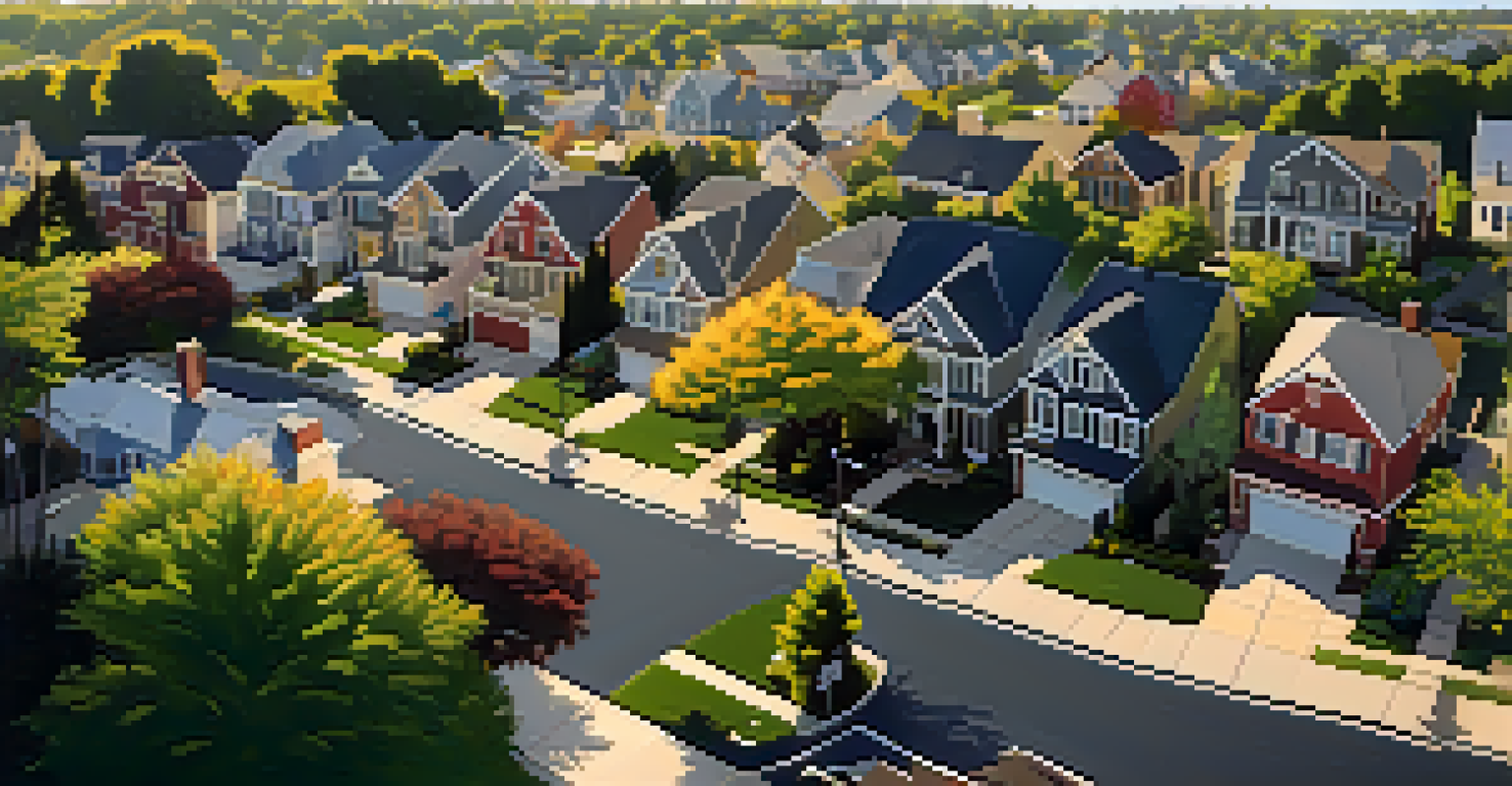The Role of Virtual Tours in Enhancing Property Listings

What Are Virtual Tours and Why Do They Matter?
Virtual tours are interactive, online experiences that allow potential buyers to explore a property from the comfort of their own home. Unlike traditional photos, these tours provide a 360-degree view, giving a more comprehensive sense of the space. In an age where convenience is key, virtual tours are becoming essential in real estate marketing.
The best marketing doesn’t feel like marketing.
They not only showcase the property's features but also create an emotional connection with potential buyers. Imagine walking through a home, checking out the layout, and envisioning your life there—all without stepping foot inside. This immersive experience can significantly influence a buyer's decision-making process.
As the real estate market evolves, incorporating technology like virtual tours isn't just a trend; it's a necessity. Properties with virtual tours often stand out in listings, attracting more views and inquiries. This can lead to quicker sales and potentially higher offers, making them a smart investment for sellers.
Enhancing Buyer Engagement Through Immersion
One of the most significant advantages of virtual tours is their ability to engage buyers more effectively. When potential buyers can interact with a property virtually, they feel more invested in the experience. This engagement can lead to a stronger emotional connection, which is crucial in real estate.

For instance, a virtual tour lets buyers explore every nook and cranny, providing a sense of familiarity and comfort. This immersive experience can help buyers visualize themselves living in the space, which is often a pivotal factor in their decision-making process. It also allows them to revisit the property multiple times, reinforcing their interest.
Interactive Buyer Engagement
Virtual tours create a more immersive experience, allowing potential buyers to explore properties and form emotional connections without physical visits.
Moreover, virtual tours can cater to different buyer needs, such as those moving from out of town who can’t easily visit multiple properties. By offering a comprehensive view of a home, sellers can engage a broader audience, maximizing their chances of a successful sale.
The Competitive Edge of Virtual Tours in Listings
In today's fast-paced real estate market, standing out is essential. Listings that include virtual tours often capture more attention than those with just static images. This visual differentiation can help properties sell faster and at better prices.
Real estate is the best investment you can make. It’s the only thing that can’t be duplicated.
For example, when a potential buyer is scrolling through listings, a virtual tour can instantly pique their interest. They are more likely to click on a listing that offers an engaging experience rather than one that only presents flat images. This increased click-through rate can translate into higher engagement and ultimately more showings.
Additionally, properties with virtual tours can be shared easily on social media and real estate platforms, increasing their reach. This broader exposure can attract more potential buyers, making virtual tours a valuable tool in a seller's marketing arsenal.
Building Trust with Transparency in Property Showings
Transparency is key in any transaction, especially in real estate. Virtual tours offer a level of transparency that traditional listings often lack. By allowing buyers to explore every aspect of a property, sellers can build trust and credibility.
When buyers can see the property in detail, they feel more assured about their decision, reducing the likelihood of surprises during in-person visits. This transparency can lead to a smoother buying process, as buyers come in with a clearer understanding of what to expect.
Enhanced Listing Visibility
Properties featuring virtual tours attract more attention and inquiries, often leading to quicker sales and better offers.
Moreover, this openness can help sellers weed out uninterested buyers. If someone is not captivated by the virtual tour, they are less likely to schedule a showing, saving time for both parties. In this way, virtual tours serve as a filtering mechanism, ensuring that only genuinely interested buyers engage further.
Cost-Effectiveness of Virtual Tours for Sellers
Investing in virtual tours can be a cost-effective strategy for property sellers. While the initial setup may require some resources, the potential return on investment is significant. Properties that feature virtual tours often sell faster and at higher prices, making the cost worthwhile.
Consider the alternative: traditional open houses and in-person showings can be time-consuming and expensive. Virtual tours eliminate the need for multiple showings, allowing sellers to showcase their property to a broader audience without the additional costs associated with hosting events.
Additionally, virtual tours can be reused for future listings, making them a versatile asset in a seller's toolkit. This reusable content means that once you invest in a quality virtual tour, it can continue to benefit you for years to come.
Adapting to Changing Buyer Preferences
As technology evolves, so do buyer preferences. Today's buyers are more tech-savvy and often expect modern conveniences in their property searches. Virtual tours align perfectly with this shift, offering a user-friendly way to explore homes remotely.
In fact, many buyers now prefer to view properties online before deciding to visit in person. This trend has been especially pronounced in recent years, where online interactions have become the norm. Virtual tours cater to this preference, making it easier for buyers to engage with listings.
Cost-Effective Selling Tool
Investing in virtual tours can streamline the selling process and reduce costs associated with traditional showings while providing long-term value.
By adapting to these changing preferences, sellers can meet buyer expectations head-on. Offering virtual tours not only shows that a seller is modern and forward-thinking but also enhances the overall buying experience, making it more enjoyable for everyone involved.
The Future of Real Estate Marketing with Virtual Tours
Looking ahead, it's clear that virtual tours will continue to play a pivotal role in real estate marketing. As technology advances, we can expect even more immersive experiences, such as virtual reality (VR) tours that take engagement to the next level. This evolution could further transform how buyers interact with listings.
Moreover, as more buyers become accustomed to virtual tours, the demand for them will likely increase. Sellers who embrace this trend early can position themselves as leaders in their market, setting themselves apart from those who stick with traditional methods.

Ultimately, the future of real estate marketing is about creating meaningful connections between buyers and properties. Virtual tours are an effective way to foster these connections, ensuring that sellers can meet the needs of a modern audience while making the buying process more efficient and enjoyable.